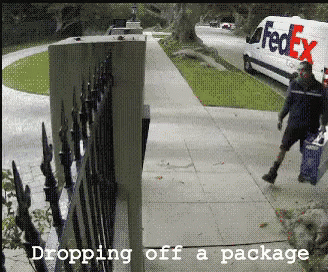
FedEx St. Jude Championship 2023
The FedEx St. Jude Championship is a marque event, drawing the world’s best to the demanding contours and challenges of TPC Southwind. As the golfing world turns its gaze to Memphis, let's dive deep into the narrative that this championship has painted in the past and what lies ahead in this year's rendition.
A Test of Precision and Strategy
Rory McIlroy, one of the game's greats, rightly said:
"It's going to be hard to control your ball from the rough. So first thing, put it in the fairway."
This brings to the forefront the course's primary challenge: precision. But, as McIlroy points out, approach play is equally crucial. With the anticipation of the #FedExStJude tournament on the horizon, players are, understandably, placing a heightened emphasis on refining their play, particularly within the 140-170 yard range.
This bracket, often overlooked by casual observers, can truly be the making or breaking point for many a player. A well-executed shot from this distance can set up a birdie opportunity or, conversely, a misjudged approach can lead to challenging recovery shots and possible bogeys or worse.
A Statistical Look at TPC Southwind
Unforgiving Rough and Waters: Bermuda rough, notoriously unpredictable, edges the fairways and greens. Combine that with the 11 water holes, and it's clear why errant shots can be heavily punished.
In the distinguished circles of professional golf, metrics provide invaluable insights that could make or break a player's strategy. Let's delve a tad deeper into some of the revealing statistics related to the course in question.
Ball Striking
Firstly, the "Good Drive" rate stands a touch on the leaner side, being 4% below the standard average. This could be perceived as a testament to the course's demanding nature, urging players to showcase the very epitome of precision and skill off the tee.
Secondly, the GIR (Green In Regulation) when playing from the rough is rather sparse at 41%. This figure casts light upon the course's challenging facets, making it evident that escaping the rough successfully is no small feat. Indeed, such a percentage heralds it as one of the most formidable challenges on the Tour.
Lastly, the course exhibits a telling statistic: the highest "Missed Fairway Penalty" margin on the Tour, standing tall at 34%. In layman's terms, this quantifies the penalty a player faces when their ball strays from the prescribed path. This statistic underscores the course's punitive nature and reiterates the premium placed on accuracy and adroit course management.
In summation, while the course may offer breathtaking vistas and a rich history, players would be well-advised to come prepared. A meticulous game plan, razor-sharp focus, and unparalleled precision will be the order of the day. Those who manage to navigate these intricate challenges will surely set themselves apart, deserving every accolade that comes their way.
Looking back at the TPC Southwind, a trend emerges. The course has historically rewarded the world's best ball-strikers.
Recent Winners & Their Odds:
- 2022: Zalatoris - 9.5 BS, +2500
- 2021: Ancer - 5.8 BS, +4500
- 2020: Thomas - 10.0 BS, +1200
Putting
Amidst the demanding environs of professional golf courses, TPC Southwind proffers a rather intriguing anomaly. When it comes to its greens, it graciously deviates from the norm, tipping its hat to the putters.
You see, TPC Southwind boasts one of the most benign group of green complexes on the Tour. It's not merely about the lushness or the meticulous mowing patterns; it's about the undulations, the subtle breaks, and the pace. These greens, while perhaps challenging in their own right, offer a sanctuary of sorts for those wielding the putter.
Evidence for such a claim? The 3-putt rate stands at a mere 1.8%. In a sport where putting precision is the difference between a triumphant victory and a heartbreaking second-place finish, such a statistic is indeed noteworthy. It means that once players find themselves on the green, the trepidation often associated with long, challenging putts is somewhat alleviated.
However, it would be wise not to be lulled into a false sense of security. For while the greens may appear forgiving, mastering them requires a blend of finesse, judgment, and, of course, a dash of luck.
In the grand tapestry of TPC Southwind, these greens serve as a testament to balance – challenging enough to test, yet generous enough to reward. As players prepare for their rounds, one can be certain that many a strategy will be built around this unique feature of the course.
Key Course Features
Challenging Layout
With a par of 70 and spanning 7,243 yards, TPC Southwind doesn’t make scoring easy. The course averaged -0.69 under par from 2019-2022, signaling its toughness.
Environmental Factors
Titled "Sweating in Memphis," players grapple with hot and humid conditions, testing their endurance.
Narrow Fairways
The 2nd narrowest on Tour, with fairways averaging just 25 yards in width in landing zones.
Doglegs and Water Hazards
Featuring 12 doglegs and water coming into play in 11 holes, strategy and patience are paramount. Not to mention, the unpredictable 2.5" Bermuda rough!
Varied Holes
The course has a mix of 12 par-4s, four par-3s, and just two par-5s, offering a rich variety of challenges.
FAQs
How significant is ball-striking at TPC Southwind?
Ball-striking is paramount. Historical winners have shown high ball-striking stats, emphasizing its importance at this course.
What are the key challenges at TPC Southwind during the FedEx St. Jude Championship?
Narrow fairways, unpredictable Bermuda rough, water hazards on 11 holes, and doglegs are among the primary challenges.
Has the championship format ever changed?
Yes. While the 2019-2023 has been a no-cut format with 70 players, the years 2015-2018 had a full field under the FedEx St. Jude Classic banner.
Betting card and thoughts
We are once again betting winner market based on macro trends from this competition. The analysis was challenging because of varying format, but we found a common trend nevertheless. This trend showed a solid market share growth for players outside the 2% winning probability after 2 rounds in most years.
Thus, we will be shorting (lay bets) all under 50/1 players and cashing out before the start of R3. Then we might place new bets for the weekend depending on situation. This strategy has yielded steady profits in the past.
Here is the card and preview of data for the week is in the Tools section. Betting only 5 top10s and 10 top20s going forward. These players will be qualified for bets based on their model rank, positive other ranks and under 2 missed cuts on their last 5 starts. The odds mentioned are the ones that market gave about 23 hours before the start (no time to hunt this time).
2%+ players (about 15 hours before the start):
Scottie Scheffler, 8.40
Jon Rahm, 12
Rory McIlroy, 12.5
Patrick Cantlay, 23
Xander Schauffele, 25
Viktor Hovland, 26
Collin Morikawa, 30
Tyrrell Hatton, 32
Tommy Fleetwood, 40
Rickie Fowler, 40
Wyndham Clark, 44
Sam Burns, 48
Jason Day, 46
See the strategic aspect of these selections above. The selected strategy is based on history and trends and our research. All bets placed on 100 unit liability structure, but the main idea is to cashout in profit before weekend.
Scottie Scheffler, 1.77
Jon Rahm, 2.24
Rory McIlroy, 2.02
Rickie Fowler, 4.5
Brian Harman, 5.3
Aiming for 5 unit payout.
Tyrrell Hatton, 1.98
Tommy Fleetwood, 2.22
Patrick Cantlay, 1.69
Xander Schauffele, 1.78
Viktor Hovland, 1.89
Collin Morikawa, 1.91
Tyrrell Hatton, 1.98
Tommy Fleetwood, 2.22
Wyndham Clark, 2.3
Max Homa, 2.48
Russell Henley, 2.54
J.T. Poston, 3
Aiming for 5 unit payout.
Winner and top bets are placed in Betfair Exchange. Sign up here.
Last week was the start of the era of simplicity. As reasoned then, last week was really profitable in every betting type. 2R strategy yielded 23% profit (and for the risk loving ones, there was a spot in the weekend to get over 100% profit) and topX both yielded over 50% profit (63.4% for top10s and 77,4% for top20s).
Good luck for the week!


















































































